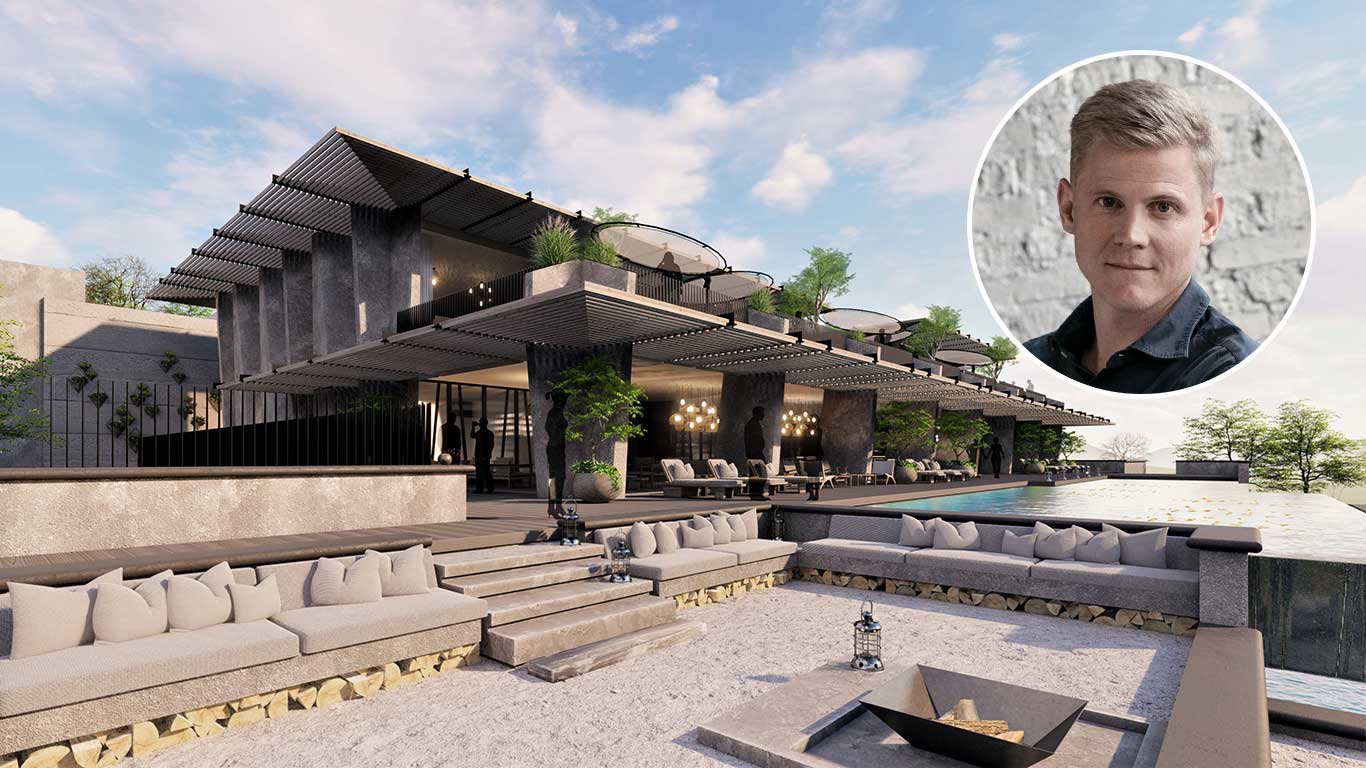
We recently caught up with Philippe Moens of 2802 Architects to learn more about the inspiration for the design and architecture of the soon-to-open Serengeti Explorer property.
Please could you give us an overview on the architectural style of the new Serengeti Explorer property?
The spectacular view was the focal point and I tried to capture nature at its very best. With Serengeti Explorer positioned on a hillside, it was important that we maximise the location and incredible views that guests have from the property. I wanted to design a building that has a very strong identity and was simultaneously very minimalistic. For example, there are lots of geometrical shaped columns that repeat throughout the project to support a lightweight roof that is cantilevering all around to filter the sun light. The thin roof contrasts quite well with the heavy angular columns. I find that the two together create a unique style that somehow looks African and contextual to the site.
Can you share more about the room design?
It was important to have a connection between the rooms and the views that they offer. For example, we wanted to integrate the balcony as much as possible to be part of the room, so it becomes an extension of the bedroom. The windows of the bedroom fully open onto the balcony, and they are also screened from neighbours ensuring maximum privacy and use.
The guestrooms’ internal furnishings are unique and almost everything (I would say 99%!) has been custom designed specifically for the rooms and spaces. The idea was to create a contemporary version of a “safari look and feel” without falling into designs that are a bit “cliché.” We wanted to offer a cosy and “homey” feel in the middle of Serengeti.
We also chose to use noble materials that have patina and lots of character such as wood, “handmade style” tiles, uneven colour plastering and other effects.
What is the design of the common areas?
Similar to the guestrooms, the various common areas are fully open to the elements, creating a feeling of enclosure, whilst also being outdoors. Most of the structure is surrounded by large outdoor decks, making the transition between indoor spaces and the spectacular views unobstructive.
The common area is composed of multiple “blocks” including the reception, bar, and restaurant, which gave me the opportunity to break a large building into a smaller scale. All the blocks together almost give the feeling of a small village where guests can walk through and around.
What can guests expect upon arriving at the property?
The sense of arrival was very important. I tried to make it spectacular and inviting. The porte-cochere is quite high with a “floating roof” which fades into the landscape of the hill. The reception area includes a dark water feature that acts as a mirror to reflect the façade and to make it seem even bigger, without going too high. As you step out of the car, through the reception hall, you immediately discover that the lodge is strategically placed amidst beautiful natural surroundings.
Is there an area that you find particularly special at Serengeti Explorer?
The lower level is even closer to the bush so whether you are working out in the gym, swimming, or having a drink by the pool bar, the infinity pool and decks disappear into the landscape which creates a natural barrier with you and the wildlife. It’s a very immersive experience.

